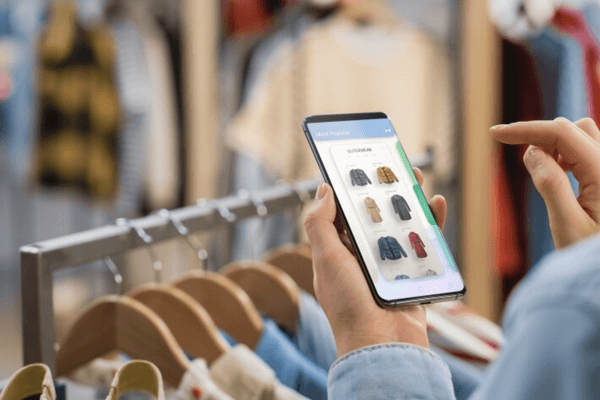The world is changing at breakneck speed, leaving behind old habits and traditions and posing new challenges for those who make customer service their livelihood, namely retailers.
A digital technology that affects the way people buy and pay ends up being the pillar of this change in consumer behaviourIt is now becoming more demanding and, above all, more aware that it is at the centre of all operations related to sales to the public.
From awareness and demand to the omnichannel experience: the consumer trends of 2026
Faced with this scenario of accelerated change, it is essential to to understand how these changes are reflected in consumer trends in 2026.
More digital, aware and demanding consumers
To understand this change in consumer habits, we must first take a close look at one of the most important consumer trends in 2026: the digitalisation of the act of purchase.
After the huge boost that the pandemic has given to e-commerce, many thought that everything would return to its previous "normality", i.e. that consumers would start to favour shopping in physical shops.
Although this is not entirely untrue, the truth is that the he relationship between the new generations and consumption has helped e-commerce not only keep pace, but even increase its weight in business turnover..
O CTT E-Commerce report for 2024 shows just that. According to this document, e-commerce is growing in Portugal, having reached 12.26 billion euros in turnover last year, which means a growth of more than 10% compared to 2023, with around 5 million Portuguese regularly shopping online.
Already in 2025, namely in the 1st quarter, the CTT E-Commerce Barometer, an indicator that tracks the evolution of e-commerce in Portugal, confirms this growth with 58.1% of Portuguese businesses say that the weight of online purchases in their turnover is more than 15%.
Sustainable and more digital consumers are not only contributing to a change in the type of business, but above all to structural changes in the way customers like to be served, since they have access to thousands of similar offers at the click of a button.
This requirement, which in practice involves offering lower prices, ease of payment through payment methods tailored to your needsflexibility in deliveries, a greater appeal to sustainability and strong pre-, during and post-sales support ends up being the difference between a completed sale or a abandoned shopping cart.
The search for personalised and convenient experiences
The demand for a seamless shopping experience in line with customers' needs also involves the search for a personalised and convenient journey, which in the latter case translates into offering payment methods in line with consumers' online habits, i.e. greater personalisation in retail.
With the help of data left by consumers, businesses should seek to turn it in their favourThis includes, for example, recommendations close to their last purchases, offering discounts and including them in exclusive promotion groups.
The rise of omnichannel shopping and marketplaces

In addition to the shopping experience itself, it's important to take into account the the rise of platforms and purchasing systems that not only make online sales more flexible, but also democratise access to services and productsThis is the case with marketplaces and the omnichannel experience.
In the first case, these platforms have given companies and individuals the opportunity to sell online without a websitesince the marketplace is already structured to host products and services.
This more informal way of selling, especially on social media, ends up captivating a large number of customers more easily, which leads to more and better business opportunities.
Similarly, omnichannel or, more simply, the sale/purchase articulated between the online shop and the physical shop, has become a a growing trend among businesses and customers looking for an integrated shopping experience that combines the best of both worlds.
The flexibility of instalment payments
Another trend increasingly valued by consumers is flexibility when it comes to payment. Many customers are looking for the possibility of splitting their purchases into instalments, in a simple and uncomplicated way.
Solutions such as Instalment plan with UNICRE allow the purchase amount to be split directly at the checkout, without using traditional credit and with total transparency. This "Buy Now, Pay Later" model guarantees convenience for the consumer, who now has greater control over their budget, and at the same time brings clear advantages for retailers by increasing conversion rates and loyalty.
With this instalment payment solutionThe customer chooses between 2 and 6 interest-free instalments with immediate approval, while the retailer receives the full amount at the time of sale.
By offering payments in instalments, businesses are aligning themselves with the demands of a modern consumer, who values not only speed and an omnichannel experience, but also financial options adapted to their daily lives.
How to prepare your business for new market demands
Faced with the digitalisation of commerce, how can you prepare your business for the demands of the market, ensure innovation at the point of sale and increase your loyalty rate in 2026?
The answer has several dimensions, but the one that takes precedence over the others is undoubtedly that of the payments.
Adapting your online business to consumer trends in 2026 and new consumer behaviour couldn't be simpler.
To meet your modernisation needs, REDUNIQ offers you the solution of E-Commerce payment and the remote payments by link.
The first allows your professional online shop to have an e-commerce payment solution that integrates with more than 300 e-commerce plugins and accepts payments with national and international cards, MB WAY, Apple Pay, Google Pay and PIX.
What's more, with the E-Commerce payment gatewayyou can offer your customers the possibility of making payments in instalments with the solution Instalment plan with UNICRE, e carry out transactions in their home currencyThis is extremely important in an increasingly globalised world.
In the case of Pay by Link solutionIf you sell online without a website, you'll be able to accept link payments, customisable in 5 languages, with cards from the main international brands, Apple Pay, Google Pay, MB WAY, PIX or Multibanco references and benefit from free membership costs.
With this solution, simply send a payment link by email, SMS or WhatsApp to close deals simply, quickly and securely, even if you sell via social media.


